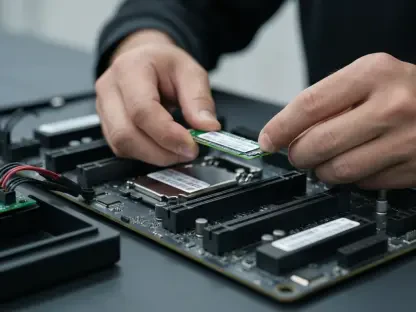The concept of controlling devices with mere thoughts, once confined to science fiction, is progressively being realized through innovative mind-control technologies. Carnegie Mellon University’s latest research marks a significant stride in this domain, demonstrating real-time, noninvasive control over individual finger movements through electroencephalography (EEG). This breakthrough holds profound implications, potentially revolutionizing technology interactions and significantly benefiting individuals, particularly those with disabilities.
Introduction to Mind-Control Technologies
At the heart of this research lie Brain-Computer Interfaces (BCIs), technologies exploring direct interactions between the human brain and external devices. This study delves into enabling such connections without invasive measures, employing EEG-based systems. Central to these explorations are inquiries into how noninvasive BCIs can facilitate intricate motor functions, elevating quality of life by bypassing traditional muscular controls, specifically for those with severe physical impairments.
Context and Importance of Research
Traditionally, BCIs relied heavily on invasive techniques necessitating complex surgical interventions, often restricting their broader applicability. This significant investment into noninvasive solutions becomes imperative, not just for those medically reliant on these technologies but also for advancing societal technological interactions. With an ever-increasing emphasis on accessibility, the urgency to develop effective, user-friendly systems is unparalleled, positioning noninvasive BCIs at the forefront of this technological evolution, transforming expectations regarding human-device interactions.
Research Methodology, Findings, and Implications
Methodology
The investigation employed a sophisticated deep-learning framework to decode EEG signals’ real-time capabilities. Utilizing motor imagery and a finely-tuned network, this approach enabled participants to perform real-time robotic control focusing on two- and three-finger actions purely through mental commands. Such methodologies underscore a pivotal shift in accurately translating brain patterns into actionable commands without physical intervention.
Findings
The empirical data reveal a groundbreaking leap in achieving individual finger movements through noninvasive means. Notably, the accuracy of these mental controls in real-time settings underscores potential for broader applications, evidencing that even intricate tasks like typing could soon be driven by thoughts alone. These findings illuminate the robustness of advanced EEG-based strategies, fostering expanded uses beyond medical rehabilitation to everyday technological interactions.
Implications
The results portend wide-ranging applications, signaling a future where devices respond seamlessly to human thought. The operational authenticity in real-world scenarios suggests that such systems may eventually become commonplace, introducing a new era of human-machine symbiosis. Additionally, these findings pave the way for extending technological autonomy to physically impaired individuals, offering them unprecedented control over their environment and improving life quality profoundly.
Reflection and Future Directions
Reflection
Throughout the study, challenges such as limited EEG signal resolution presented considerable obstacles. Overcoming these through refined decoding strategies highlighted the inherent potential yet urged for broader exploration. While successful, the system’s scalability and adaptability to diverse real-life applications warrant further investigation to ensure inclusivity and application scope.
Future Directions
Moving forward, addressing unanswered questions involves refining EEG techniques, enhancing signal resolution, and extending BCI applications to more ambient technological environments. Pioneering research should explore extending control to full motor functionalities and potentially exploring emotional or cognitive state integrations, heralding a holistic human-centered technological experience.
Conclusion
This research underscores a momentous advancement in noninvasive brain control technologies, heralding significant implications for both medical fields and vast societal applications. While challenges persist, notably regarding signal precision and adaptability, these findings open avenues for unprecedented innovations in mind-controlled interfaces. Future investigations promise to expand these technologies’ reach, potentially redefining everyday technology interactions and embracing new paradigms of human empowerment through science.









